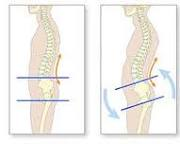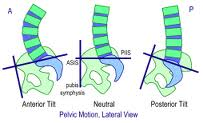September 8, 2012
Pilates for Breast Cancer Survivors
Monday, September 22, 2008 at 05:39PM
Amy Leibrock in Anatomy, Special Populations, Teaching Strategies
By Suzanne Martin, PT, DPT
Pilates training can be an excellent way to achieve the postural re-education and muscle-balancing necessary to recover from the side effects of breast cancer treatment. Pilates can help alleviate pain from breast cancer operative procedures, restore joint mobility and tissue integrity, and help regain lost strength. Most importantly, Pilates can be a gateway for a true “Return to Life” for many women, as the title of Joseph Pilates’ popular book states. However, Pilates instructors should be on the lookout for some often coincident injuries that will require additional special knowledge about the shoulder complex in order to work safely and effectively with the growing population of breast cancer survivors.
The Anatomy of the Shoulder Complex
Remember that the shoulder complex is made up of four joints, three anatomical and one functional. They are the gleno-humeral joint, which is the ball-and-socket joint where the arm swings down from the shoulder blade; the acromial-clavicular joint where the flat bone of the acromion meets the collarbone; the sterno-clavicular joint where the breastbone attaches to the collarbone; and the functional scapula-thoracic joint where the shoulder blade glides along the rib cage.
Common Breast Cancer Treatment Injuries
Basically there are two categories of coincident common injuries, those that are due to inflammatory processes such as nerve irritations and frozen shoulder (fascial inflammation), and those that are due to faulty mechanical patterns such as impingement or rotator cuff strains. A word of advice is to always get approval from your client’s doctor for exercise programs after any surgical procedures. It’s common to have to wait 10 days to two weeks after basic mastectomy to begin exercises.
Nerve irritations: The nerves of the neck come out of the spinal cord and run between the first rib and the collarbone and into the armpit before diving into the arm. These nerves of the upper body converge in a spider-web-like pattern in the collarbone and armpit areas called the brachial plexus. These areas are hit hardest by mastectomy and other operative procedures that replace breast tissue such as implants. Tightening of adherent tissues in these areas combined with the systemic effect of strong drugs required to combat cancer can produce irritations similar to the repetitive stress problems associated with computer overuse, such as carpal tunnel syndrome.
Frozen Shoulder: Frozen shoulder happens when the tissues around the armpit are traumatized by lymph node biopsy and/or removal. The plastic wrap–like fascial tissue that separates the shoulder blade from the ribcage wall actually becomes inflamed. This painful inflammation causes the shoulder blade to clamp down on the rib wall. Frozen shoulder is said to have an inflammatory stage and a thawing stage. Pilates is particularly helpful when the inflammation is waning and judicious stretching can be regained.
Impingement: The rotator cuff tendons run between the flat acromion and the head of the humerus. Impingement injury occurs after breast cancer surgeries when the humeral head is pulled up and presses up the rotator cuff tendons against the bony acromion. The scarring from surgeries and the adhesions along the chest wall and armpit tighten the area and cause a faulty movement pattern. Pilates’ emphasis on precision helps the body to steer its own survival-mode compensatory patterns and to restore optimal motor patterns.
Rotator Cuff Injuries: The rotator cuff muscles originate on the shoulder blade and end on the head of the humerus. The main shoulder joint, the gleno-humeral joint is a ball and socket joint whose relationship is similar to that of a golf ball on a golf tee; it’s inherently unstable. The function of the rotator cuff muscles and tendons is to grab the head of the humerus and twist and suck the arm into the small socket. Trauma to the chest and armpit weakens the involved arm and shoulder and so sets up not only faulty movement patterns but also poses an increased likelihood of injury. Pilates provides the ability for many levels of progression and so a safe mode of exercise to accommodate all levels, from fragility into full strength.
Beginning Post-Rehab
The best progression for a woman recovering from breast cancer treatment is to start at the mat with mat breathing, range of motion and isometrics. Then progress to Pilates supine reformer work with hands in hand grips. Next, progress the sequence over time to a stationary/ fixed hand placement on the uprights of the trap table. Finally, continue the progression to using the push-through bar on the trap table. Remember, being conservative with this group goes a long way. Here’s a sample of how to start and progress so as to avoid injuries and promote optimal restoration. All traditional-named exercises can be found in the PMA® Certification Manual.
Mat Work
Breath: Lie supine with fingertips on the breastbone. Inhale, then gently use the fingertips to help the breastbone deflate with the exhalation. Repeat several times exploring the internal sensations.
Balloon Breath: Lie supine with knees bent, feet on mat. Create a see-saw torso motion. Inhale while expanding and filling the chest with air, then switch to expanding and distending the abdomen on the exhalation.
Range of Motion
Arm Semicircles: Lie on your left side with towel or pillow under neck for support. Imagine you are lying on the face of a clock. Start with palms together in front of the chest on the floor at 3 o’clock. Gently move the top hand and arm in a clock-like fashion, moving up beyond the head on the floor to 12 o’clock, and ever so gently continue toward 9 o’clock. Stop at the tight spots, breathe and support your client’s arm if needed. Then reverse back to 3 o’clock. Repeat 3 mores times.
Ball Up the Wall: Stand fairly close to a wall, a position in between directly sideways and face on. Place a ball larger than a tennis ball underneath the palm, against the wall. Make sure the elbow is bent at the waist and the hand is comfortable. Slowly roll the ball up the wall, progressing the ball from the hand to rolling along the forearm as high as is comfortable and then roll down. Repeat several times, but don’t overdo it.
Isometric Setting
Lying supine, put the calves up on the long box, place a ball in between the knees and tie them together with a band. Find neutral spine and neutral shoulder blade positions. Bend the elbows, tuck them into the waist, and place a ball about 4 inches in diameter in between the hands with a band gently tying them onto the ball. Gently press the head, shoulder blades into the mat. Lift the groin muscles toward the head. Breathe gently as you press the hands and the knees together for 30 seconds. Then alternate by gently pressing the hands and knees outwards for 30 seconds, while still pressing the shoulders and head into the mat and simultaneously lifting the groin muscles. Don’t strain; “Meet it, don’t beat it.”
Pilates Reformer
Leg Work: All leg work is of course beneficial to establishing a foundation for all upper extremity use and follows the rehabilitative principle of dissociating the injured area from direct pressure or line-of-pull.
Supine: The feet start on the base. Use a light spring to begin. Compress the hollow and navel to the mat, lift the groin, then lift one knee, then the other into the table top position. Place a ball between the knees to gently hold the neutral leg line. Place the hand grips into the palms and gently straighten the arms onto the mat, and lift them about 3 inches. Go through this sequence with about 4-6 repetitions each:
a) hands go up toward ceiling exhale as they lower,
b) turn the palms to face the torso, move the hands sideways in line with the ribcage, moving away from the torso and then returning to it,
c) make small circles with the hands, 6 in each direction,
d) end with triceps presses; the upper arm presses against the mat with the elbows tucked into the waist, the elbows bend while the back of the hands move up toward the ceiling and then the palms return down to the mat. Be sure to add easy breath, by exhaling on the exertion. Anchor the solar plexus (area of chest below the armpit line) to the mat.
Progress to classic Pilates reformer work such as Rowing, Chest Expansion, Hug-a-Tree, Pulling Straps and ‘T,’ but be very careful of Salute. The Mermaid provides a more advanced progression to full rotator cuff and armpit range. A word of caution: one ‘oops’ to you could be a giant set-back to a survivor.
Trap Table
Holding onto Uprights: Walking, Parakeet, Foot Work, Tower and Hip-Opener all help to stabilize the upper body while the spine or legs are involved in motion.
Push–Through Bar: A great tool for exploring range is the push-through bar, but it’s very easy to injure the rotator cuff if the range is pushed too quickly.
Use special caution when progressing Push-Through, seated front or seated back, Sit-Up, Swan, Mermaid or Cat.
Do: Start with small ranges and hover closely in order to spot a range that might quickly move out of control. Listen and observe for cues of discomfort or apprehension from your client.
Don’t: Assume your client knows what’s best for her progression. Clients may not be able to tell when to push and when not to push. They may need to be held back a bit. Following the principles of respecting scope of practice, never directly tug or pull on an arm or area of tightness, especially if you are not licensed to do so. Giving feedback to someone who is rehabilitating is helpful to them to determine how far, or intense, they can take a movement.
Lymphedema: Swelling in the Arm, Armpit and Chest
Research done on Dragon Boat Teams show that women can perform very strenuous arm motions and actually not develop lymphedema, the swelling associated with breast tissue and lymph node removal as well as the effects of radiation therapy. It appears that the tendency to develop lymphedema may have to do with genetics and body type. However, one exercise physiology fact is that blood moves from the torso and into the extremities with exercise. So your client may experience some swelling with the arm use of Pilates. If this should happen, your client should wear her sleeve, and if she is at all apprehensive, she should consult her medical team for advice or evaluation.
Suzanne Martin, PT, DPT, is a doctor of physical therapy and a gold-certified Pilates expert, as well as an award-winning author and DVD producer. She has 25 years of experience in the health and movement fields, blending art and science into her instruction. She is a Master ACE and ASCM trainer (with a specialty in exercise for cancer rehabilitation), and maintains a private Pilates/physical therapy practice, Total Body Development in Alameda, Calif. As a performing arts specialist, she conducts nutrition seminars for the School of the San Francisco Ballet and is the lead physical therapist for Smuin Ballet in San Francisco. Through Pilates Therapeutics®, she provides instructional DVDs (available for CE credit) and courses in the therapeutic application of the Pilates Method and nutrition. For more information, visit pilatestherapeutics.com.





